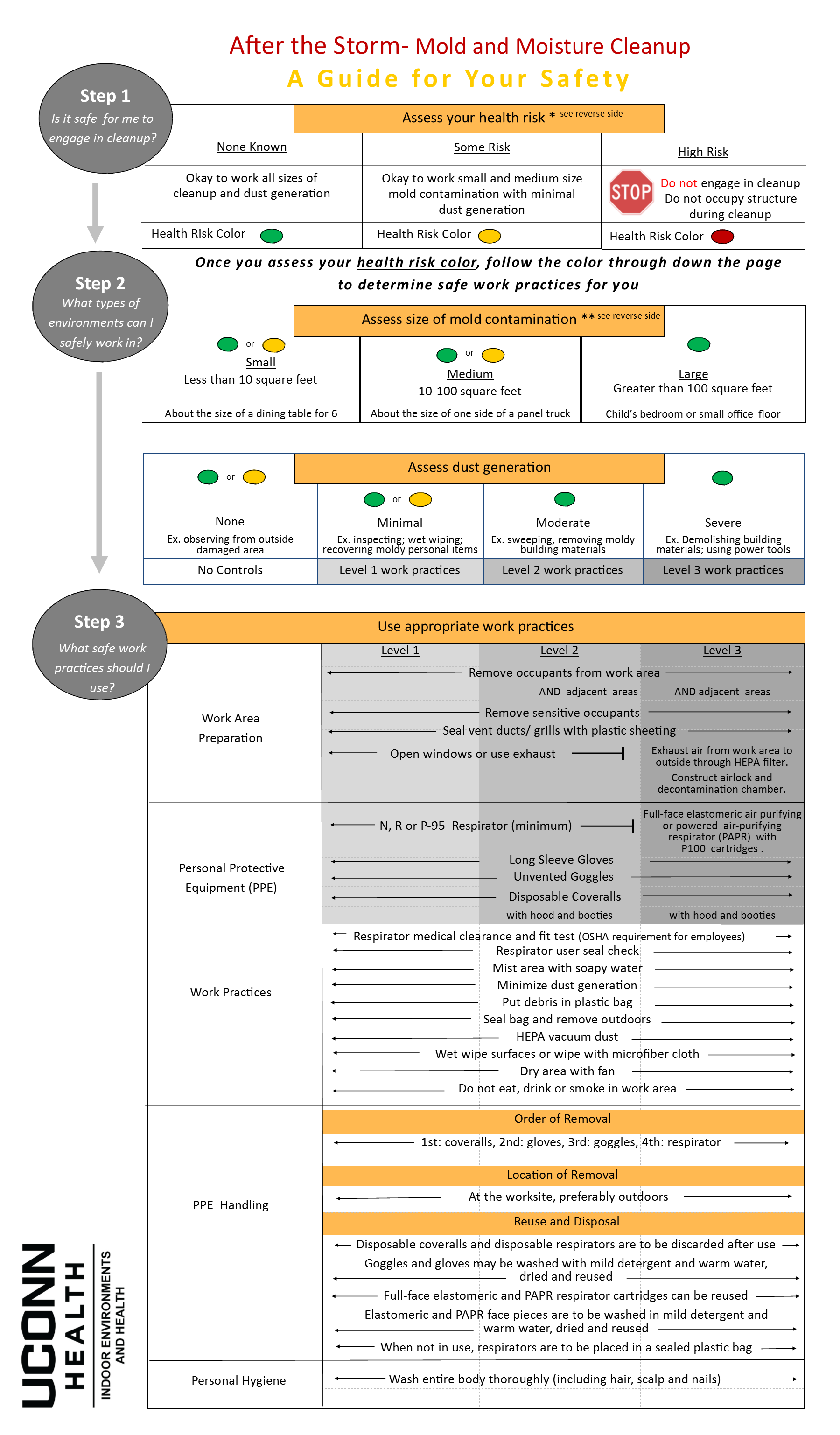A flow chart for workers, volunteers, and residents
This flow chart provides guidance on how to protect yourself from exposures related to mold and moisture when cleaning up homes and buildings after flooding from severe storms.
PDF: After The Storm – Mold and Moisture Clean-up Guide For Your Safety – Before printing on 8.5 x 11 sized paper you may have to adjust your printer settings by clicking the box to “shrink oversized pages”.

*We suggest that individuals determine their individual health risk in conjunction with their health provider well in advance of a severe weather event. Considerations include cardiac and respiratory status, allergies, age and immune response status.
General guidance from the Centers for Disease Control and Prevention for determining health risk and for selecting personal protective equipment, can be accessed at Population-Specific Recommendations for Protection From Exposure to Mold in Flooded Buildings by Specific Activity and Risk Factor. This chart provides population based criteria that would be helpful to health providers and individuals in discussions about personal health risks.
** This flow chart provides guidance for workers, volunteers, and residents faced with cleaning up homes and buildings after flooding from severe storms. For general guidance on mold contamination please refer to the Environmental Protection Agency’s A Brief Guide to Mold, Moisture, and Your Home, and the Environmental Protection Agency’s Mold Remediation in Schools and Commercial Buildings.
For questions or additional information please contact:
Paula Schenck at 860-679-2368 or schenck@uchc.edu
Paul Bureau at 860-486-0040 or paul.bureau@uconn.edu
Kelly Wallace at 860-679-2971 or kewallace@uchc.edu
This diagram was developed as part of a project funded under the Centers for Disease Control and Prevention’s National Institute for Occupational Safety and Health (NIOSH) Hurricane Sandy Cooperative Agreement 1U01OH010627-01. This diagram is solely the responsibility of the project faculty and staff and does not necessarily represent the official views of NIOSH.